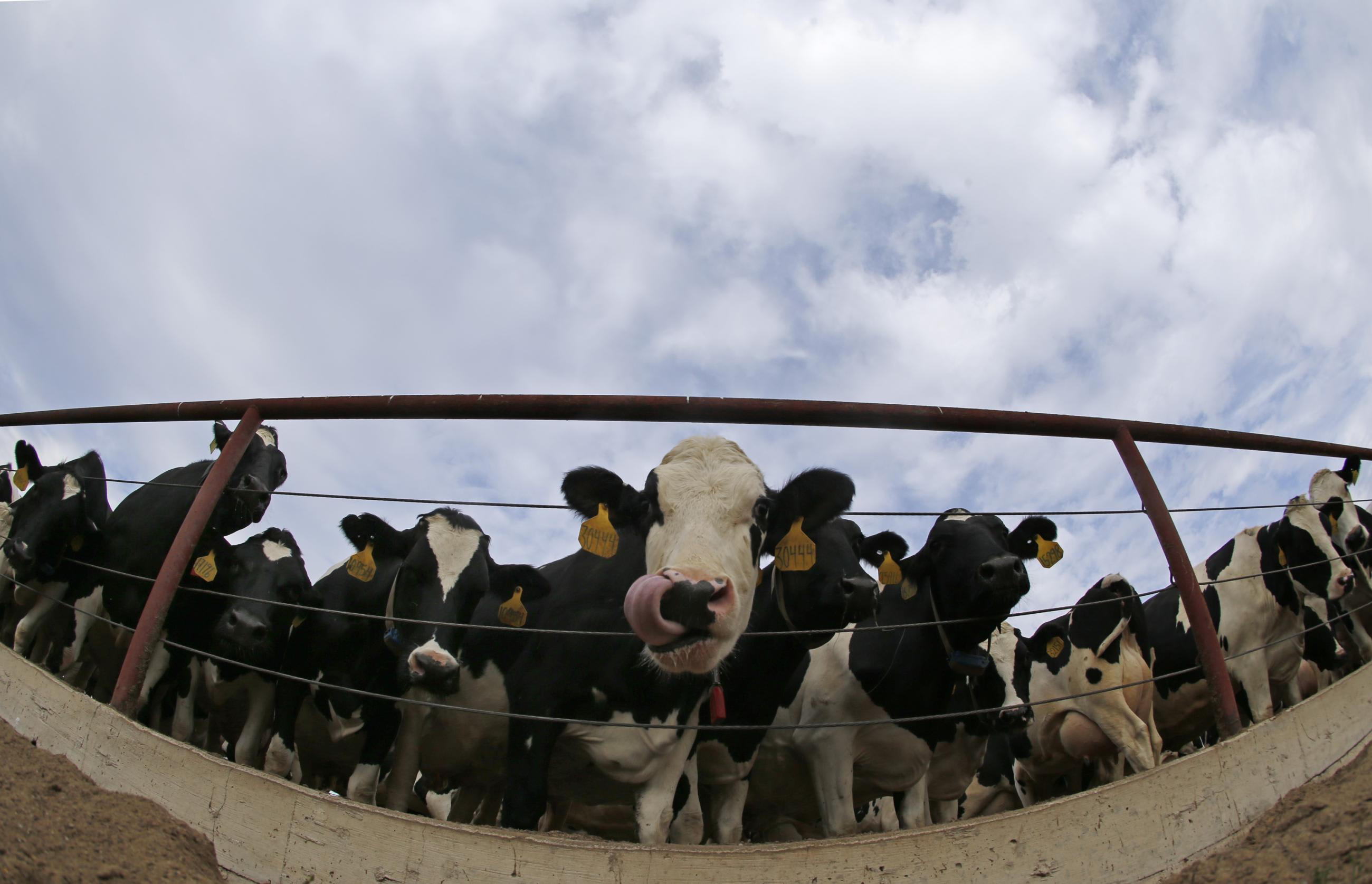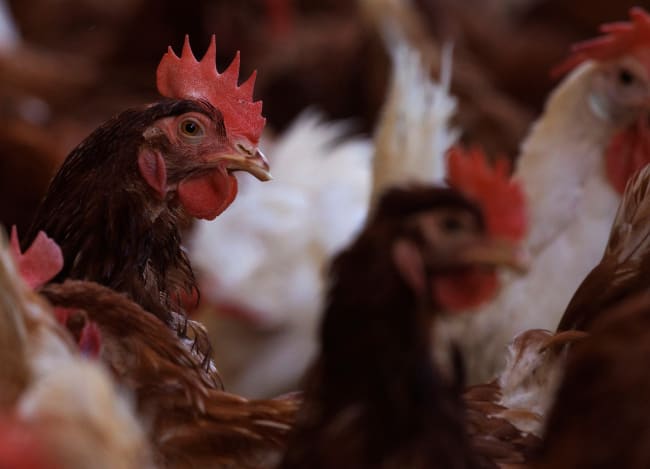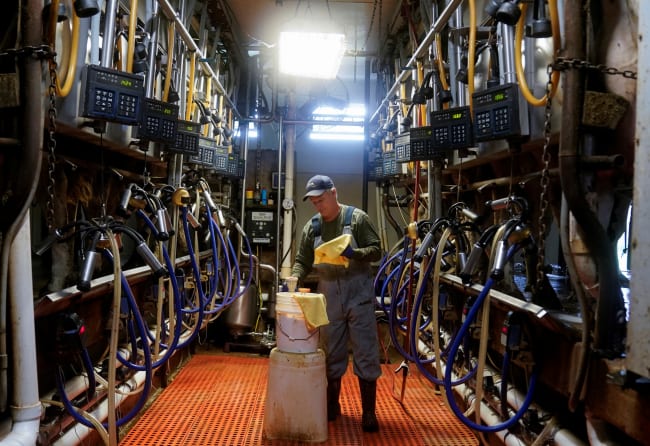Think Global Health is no longer updating the H5N1 bird flu timeline, which contains entries from June 13, 2024 to July 8, 2025—the date when the Centers for Disease Control and Prevention ended its emergency response for the outbreak. The Think Global Health team will continue to report individual articles about H5N1 and will revisit the timeline if the epidemic rebounds.
Epidemics occur when data systems fail. Whether in human, animal, or plant populations, responding effectively to an infectious disease outbreak requires good tracking.
Novel and emerging pathogens, such as the highly pathogenic H5N1 avian influenza virus, stress existing data systems because funding for public health surveillance is typically tied to specific pathogens or hosts, for example, influenza rather than SARS-CoV-2 or poultry rather than dairy cattle for H5N1. When strained data systems break, lives and livelihoods are lost. Such were the consequences experienced during the COVID-19 pandemic.
The need to address the unique data challenges present during the first, critical moments of a new outbreak is why Professors Moritz Kraemer (University of Oxford), John Brownstein (Boston Children's Hospital), and I [Samuel Scarpino] cofounded an international data science consortium called Global.health.
Our consortium has focused on connecting the dots between the disjointed data systems related to the ongoing H5N1 outbreak in the United States. With this data, readers can better see the timeline of events unfolding, track the effectiveness of interventions, and monitor the evolving risk to human and livestock populations.
Think Global Health is no longer updating the H5N1 bird flu timeline, which contains entries from June 13, 2024 to July 8, 2025—the date when the Centers for Disease Control and Prevention ended its emergency response for the outbreak. The Think Global Health team will continue to report individual articles about H5N1 and will revisit the timeline if the epidemic rebounds.
The Gaps Filled by Global.health
Infectious disease data from human and animal populations is almost always collected by a variety of public, private, multilateral, and nonprofit agencies. The U.S. government agencies responsible for collecting this data serve populations ranging from hyperlocal to federal, and their interactions are governed by a complex web of agreements and regulations that often hinder data sharing.
The ongoing H5N1 outbreak further complicates the data picture because many in the scientific community failed to anticipate an avian influenza virus spreading effectively through dairy cattle—despite evidence showing that bovine infections were possible. Historically, wild birds, poultry, and pigs were thought to be the key drivers of novel influenza transmission and spillover risk to humans.
Existing data relationships are scarce between the U.S. organizations responding to H5N1, which has led to gaps and delays in information sharing. The data thus comes from disparate sources and ranges from information confirmed by multiple agencies to rumors spread via social media.
At Global.health, we are working to collect, standardize, vet, and share these data with scientists, government agencies, and the public.
What the Timeline Reveals About the Outbreak So Far
Beyond seeing the outbreak unfold, our team can also integrate data to begin uncovering the drivers of H5N1 transmission. As the world learned during the early days of SARS-CoV-2 coronavirus, determining the scale of infection—along with the degree to which human cases have been missed—is essential to controlling viral spread and avoiding lockdowns.
This question of missed or silent infections is one that has historically been challenging to answer. Recently, wastewater surveillance, a process where sewage is tested for the presence of pathogen genomic material, has proven invaluable for tracking otherwise hidden infections across a broad range of pathogens and is a cost-effective solution for an "always on" surveillance.
This question of missed or silent infections is one that has historically been challenging to answer
As of June 12, by combining wastewater surveillance with data on the number and location of infected farms and information coming from outpatient clinics, emergency departments, and hospitals, our team asserts that very few human cases of H5N1 have been missed. This assertion is in agreement with the Centers for Disease Control and Prevention (CDC).
Nevertheless, the data also suggests that many dairy farms, milk processing plants, and other potential locations experiencing H5N1 transmission in animals could have been overlooked.
Our team is beginning to track whether new interventions and resources provided by the CDC, U.S. Department of Agriculture, and other agencies are working.
If these interventions are effective, testing rates for both humans and animals should increase, wastewater surveillance should expand, and the number of newly infected farms should start to decline.
If cases continue to rise despite better public health surveillance, then more action will be required to contain the outbreak. Additional actions could include vaccinating dairy cattle, funding for expanded farm worker and environmental testing, and domestic airline traveler screening.
What's Next for H5N1 and How Global.health Is Responding
Our team will be closely watching viral genome datasets for mutations that may indicate adaptation to human hosts. We will continue tracking information coming from wastewater surveillance, combined with traditional epidemiological data on influenza infections in humans, to watch for the earliest signs of human-to-human spread or missed spillover cases in humans coming from dairy cattle or other animal sources. Another noteworthy signal will be the growth or reduction in newly infected farms as an indication as to whether interventions by the USDA and other organizations are starting to work.
Global.health is also ramping up efforts internationally and tracking other highly pathogenic avian influenza strains more broadly. Our expanded effort includes monitoring the fatal H5N2 case in Mexico, which was recently announced as a part of a broader initiative at our organization to support data-driven global health.
To that end, our organization is monitoring for H5N1 outbreak in other countries. Positive signs from Canada show that H5N1 is either absent or rare in dairy cattle, but as birds migrate further north for the summer, spillovers into agriculture populations in that country are possible. Nevertheless, beyond the United States and Canada, H5N1 remains a persistent threat, and the virus's new relationship with dairy cattle will only complicate the picture and data challenges.

EDITOR'S NOTE: This article was originally published on June 13, 2024.












